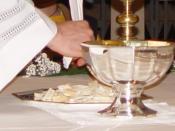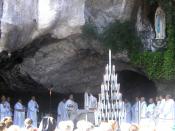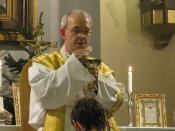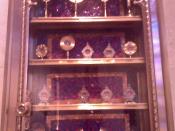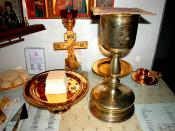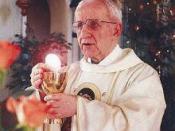The formal parts of the mass that is the liturgy of the word and Eucharist, the language is accurate and organized. Many repetitive phases are from the Hebrew scriptures (for example, blessed is he who comes in the name of the lord). In the not so formal parts of the mass for example the homily the priest uses a combination of colloquial and formal words as he addresses the readings.
The priest for most of the Eucharistic celebration resides on the sanctuary facing the people both during the introduction and through the liturgy of the word and other readings. The people on the other hand are assembled in the body of the church facing the sanctuary.
This is the physical arrangement of the people and the priest-in Stuartholme chapel where I attend the eucharistic celebration the chapel is in the shape of a cross to remind the people of the sacrifice the Jesus made when he died and rose from the dead.
The sanctuary, which is raised for all to see, and covered in marble and contains the alter, the focus point of worship. The alter is a table of saccadic and a place of the sacred meal. The accompanying stained glass window reminds people of this. The worship space also includes the lecture where the liturgy of the word is read; a sanctimony lamp, which reminds us of the fact that god, is present. There is also the small table for the vessel used on the alter, also a small chair in which the priest is to sit and space for the alter servers.
The priest taking the primary sacramental role leads the celebration. His role includes the consecration of the bread and wine into the body and blood of Christ. Varies members of the consecration take particular roles involving communion and other things such as "ÃÂcalled to worship, reading the scriptures distribution of communion, offertory precession, reflection and particular singing parts. the hole
